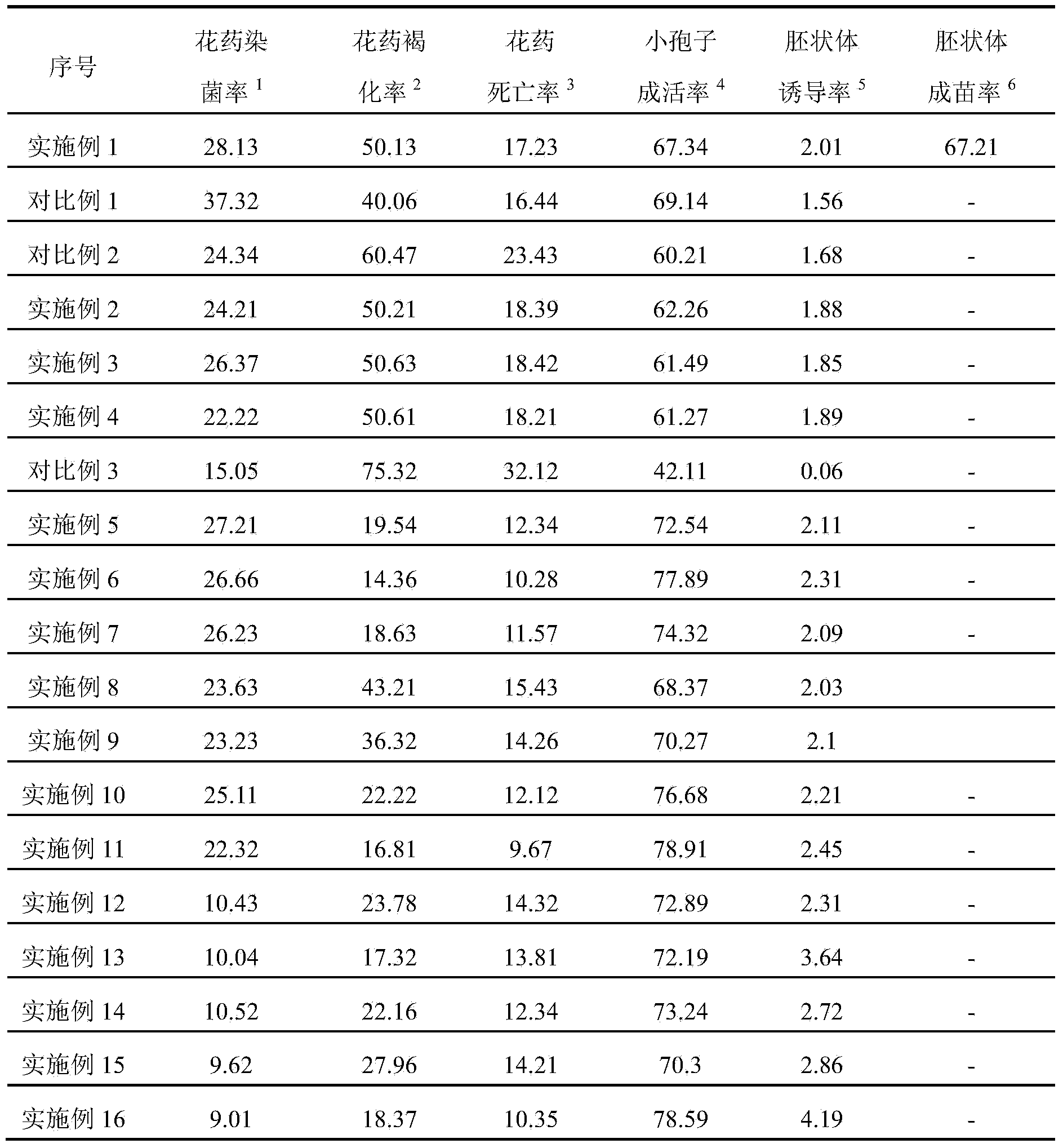Capsicum annuum L. anther tissue culture method
A pepper anther and tissue culture technology, applied to plant cells and other directions, can solve problems such as unsatisfactory effect, anther browning, high pollution rate, etc. Effect
- Summary
- Abstract
- Description
- Claims
- Application Information
AI Technical Summary
Problems solved by technology
Method used
Image
Examples
Embodiment 1
[0051] Cultivation method of capsicum anther
[0052] 1) Flower bud treatment: use the pepper variety Fuxiang Zaoshuai as the experimental material, collect the experimental materials in the field from 7:00 to 8:00 in the morning, and select robust pepper plants with good growth potential and no pests and diseases. The collection is in the single-nucleus marginalization stage Put the pepper buds into a Petri dish covered with moist cotton at the bottom, place the Petri dish in a refrigerator at 4°C for 48 hours of low-temperature pretreatment, take it out, pinch the flower stalk at the bottom of the bud directly with your left hand, and wrap it away with pointed tweezers with your right hand Gently draw a circle at about 1 / 2 of the top of the bud, peel off the calyx at the top of the bud to reveal the turquoise petals, and rinse under running water for 5 minutes (min).
[0053] 2) Disinfection of flower buds: put the rinsed flower buds into a sterile nylon mesh bag with an ape...
Embodiment 2
[0064] Collect pepper flower buds at the single-nucleus marginal stage, put them into a petri dish with cotton on the bottom, and take them out after 48 hours of low-temperature pretreatment in a refrigerator at 4°C. The cotton was soaked in 0.05g / L streptomycin solution. Other operations are the same as in Example 1.
Embodiment 3
[0066] Collect pepper flower buds at the single-nucleus marginal stage, put them into a petri dish with cotton on the bottom, and take them out after 48 hours of low-temperature pretreatment in a refrigerator at 4°C. The cotton was soaked in 0.05g / L gentamycin solution. Other operations are the same as in Example 1.
PUM
| Property | Measurement | Unit |
|---|---|---|
| pore size | aaaaa | aaaaa |
Abstract
Description
Claims
Application Information
 Login to View More
Login to View More - R&D
- Intellectual Property
- Life Sciences
- Materials
- Tech Scout
- Unparalleled Data Quality
- Higher Quality Content
- 60% Fewer Hallucinations
Browse by: Latest US Patents, China's latest patents, Technical Efficacy Thesaurus, Application Domain, Technology Topic, Popular Technical Reports.
© 2025 PatSnap. All rights reserved.Legal|Privacy policy|Modern Slavery Act Transparency Statement|Sitemap|About US| Contact US: help@patsnap.com



